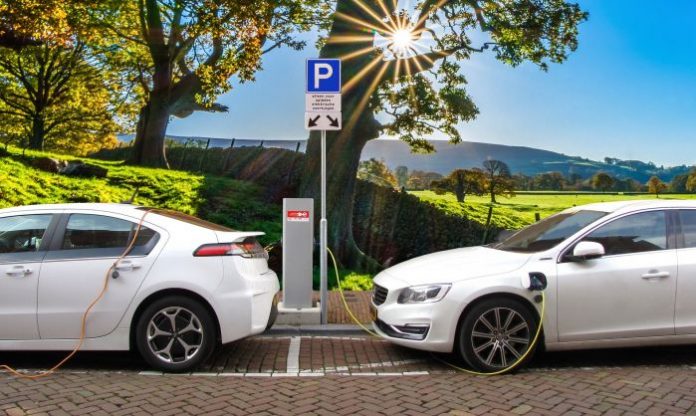
In 1886 the German engineer Karl Benz registered, at the German Empire Patent Office, Patent Motorwagen, renamed by the press “Velociped”: the first car in history with three wheels and powered by ligroina (oil ether), a sort of “light petrol”. The amazing invention of the car has revolutionized ma’s life bringing several benefits, but also the unresolved problem of air pollution generated by the internal combustion of the engine. In fact, the resulting exhaust gases can cause respiratory diseases, eye irritation, but they are also responsible for universal problems – smog, acid rain, greenhouse effect – today no longer abstract and that raise concern and controversy about the way to solve them. With the recent decisions of the European Community, the solution would seem to be the electrification of engines.
Electric cars, often initialed B.E.V. (Battery Electric Vehicle) are vehicles without fuel tanks, that is characterized by an electric motor, therefore fully powered with electricity: it’s given by a pack of rechargeable lithium batteries (the lightest metal). The discussion interposes between the supporters of electric cars and the opponents of them, who highlight deficits, inconsistencies, impossibility. What are the motivations of both?
For the supporters there are many advantages that can be derived from the transition to pure electricity. As there is no combustion, the machine in analysis does not emit pollutants from the exhaust and is therefore called “ecological”; if the power plant from which energy is derived is fed from renewable sources the emissions are zero. The passenger car can be recharged at the charging stations and service points: common public places, conveniently at the domestic outlet, hotel, garage wallboxes, shopping centers. Noise pollution would decrease due to the silence of the electric motor. They would also have modest maintenance prices and several administrative advantages (the car tax is not paid for 5 years and is reduced by 75% – purchase incentives – free access everywhere). To confirm the providentially of pure electricity competition the Italian limited company RSE (Energy System Research) with the study of parameters Well-to-wheel and Life Cycle Assessment to compare exhaust emissions electric cars with those of traditional vehicles. The WTW approach would indicate that electric cars emit less Co2eq than internal combustion cars and LCA analysis, by virtue of the many and complex variables considered (Energy mix used to recharge the battery – Comparability of power and performance – Estimate of consumption – Life of the car and battery – Co2eq emissions related to the production of batteries) would confirm that the electric vehicle is always the one with the least “external environmental costs”. In essence, the savings of Co2eq, in LCA and in urban driving cycles, would vary between 55% and 40% compared to petrol versions and between 40% and 22% compared to diesel ones.
However, those who argue the inconsistencies underlines that the car should not be defined as a “zero emission” since, compared to the combustion car, it would emit CO2 emissions lower by at least 25-30% over long distances, but not zero. According to the independent German research institute IFO, the electric car does not emit pollutants during its use, but the total pollution is provided by the source that feeds the batteries and emissions generated by the disposal of accumulators at the end of life; the Institute proves that in Germany the complete life cycle of a Tesla Model 3 produces between 156 and 181 g/km of CO2, compared to 141 g/km of a Mercedes C220d. And what is the fate of exhausted batteries? To date there is no answer, even if the EU is studying how to create supply chains that can dispose of this particular waste. In addition to the non-existence of a recovery center in Europe, there is the instability and high flammability of lithium: the ion and lithium batteries would be more difficult to demolish in comparison to the traditional ones and the elements contained in them (Co, Mn, Ni) would be more dangerous, polluters and explosives. In addition, at the moment there is no plan to regulate the methods of demolition and recycling of the multiple components of vehicles that will end up in landfill. Among the critical issues are the reduced availability of charging stations and prohibitive purchase costs on a large scale. From the analysis of the latest data of the Eafo (European Alternative Fuel Observatory) it emerges that in Italy there are 17,397 charging points, of which over 70% is public, but the Italian infrastructure is still behind Europe and most of the installations are centralized in the Central North. In addition, the obvious obstacle for the buyer would be the excessive market cost, which is a reason for the inability of the mass company to purchase: in many cases the price list starts from 23,500 euros of the simplest models up to 150,000 euros of the most technologically advanced ones.

In recent months, the multinational Toyota has raised a number of doubts about the real sustainability of electric cars because, to be defined “zero emissions”, should assess all stages of the product. It would be reckless to aim only for pure electric according to the vice president of the company Shigeki Terashi, who claims the advantage of a “multi-technological approach”.
«We have to be realistic, the ecological transition does not happen in a moment» , says Minister Roberto Cingolani, putting into place the problems, in particular the increase in costs and the limited presence of columns, that would hinder the electrification of cars in Italy.
With the same hypothetical advantages and disadvantages, it would seem that there is no absolute truth. Est modus in rebus? Beyond all relativism, the objectives, unequivocally, remain the same: reduction of pollutants, fight against climate change, improvement of air quality.
In conclusion, the European Commission has established that from 2035 it will no longer be possible to register gasoline or diesel cars in order to achieve climate neutrality by 2050, arousing “Bewilderment and strong concern” of ‘Anfia (the National Automotive Industry Association). In Italy we will say goodbye to traditional vehicles by 2040; the Minister of Infrastructure and Sustainable Mobility, Enrico Giovannini, said that the car manufacturers are working on the product offer, on the reduction of battery costs and their disposal and recovery regulations in order to minimize the pollution that could result from them. Synergically, the minister assures, the renewal of the “circulating park”, one of the oldest in Europe, will be promoted and incentives issued to raise awareness of the use of engines that would help to “breathe”, not only the planet, but the community itself.



































